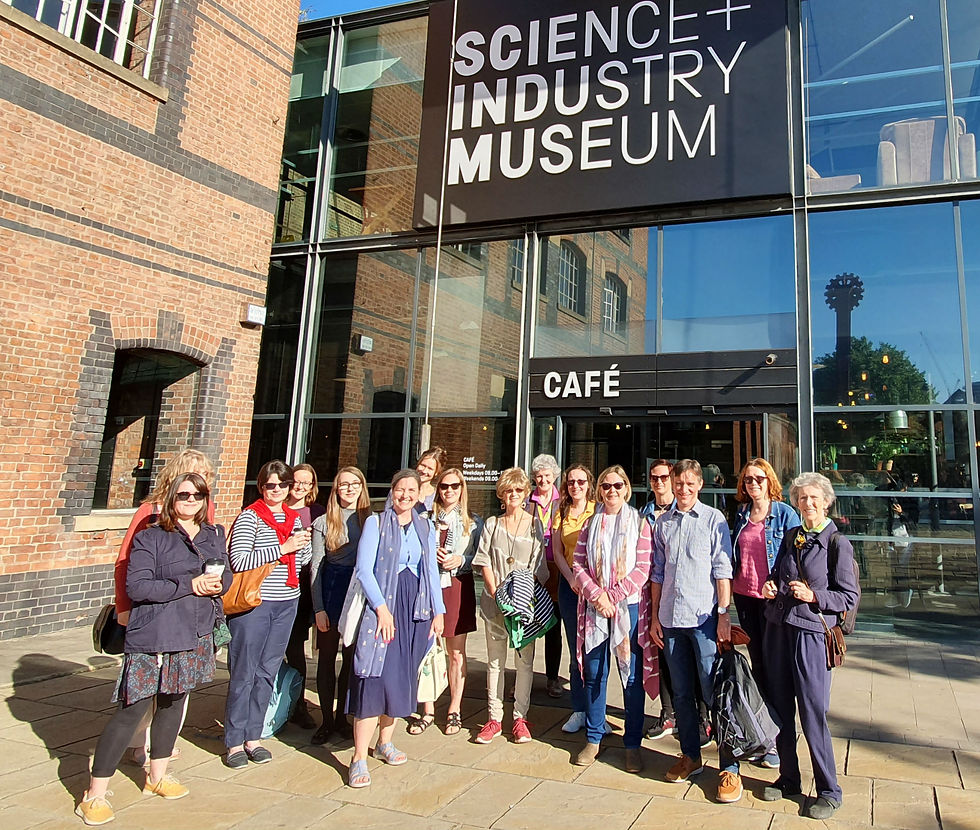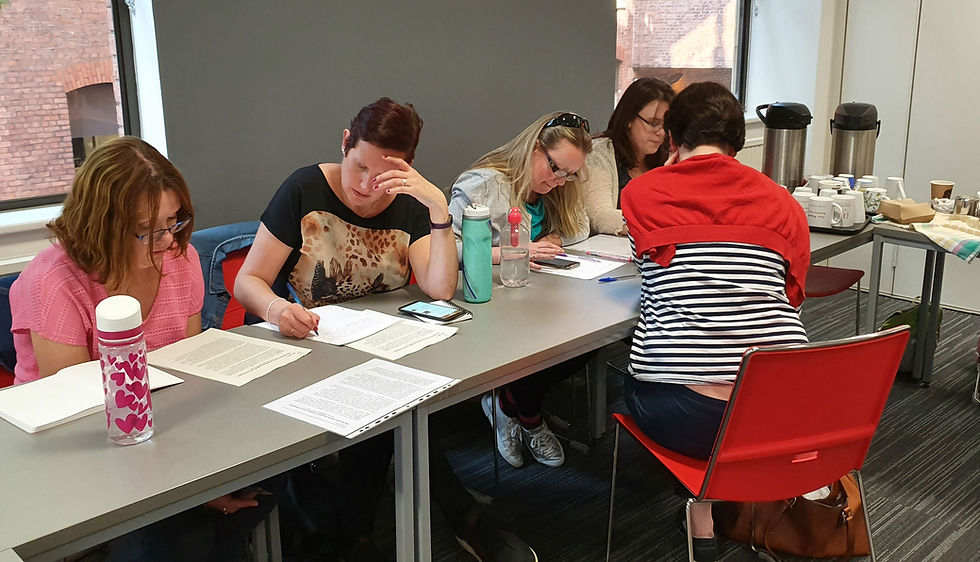Tarte Tatin to Bakewell tart: French Connections with the NWTN
- Hannah Lawrence
- Dec 10, 2019
- 2 min read
This article was first published in the Institute of Translation and Interpreting's November-December 2019 Bulletin, and has been reproduced here with permission.
On the weekend of 20-21 September, I was delighted to join others at the French
Connections event in Manchester. This gastronomy-focused French<>English
translation event was organised by Laurence Bisot and Janice Crossfield of the North West
For those of us in town on the Friday, we started with an enjoyable evening at the Côte
Brasserie. The following day we were treated to a tour of the city under stunning blue skies. Led by guide and fellow linguist Pauline Lloyd, our tour was peppered with interesting titbits of history, focusing on Manchester’s many French connections. From impressionist Pierre Adolphe Valette teaching LS Lowry that industrial landscapes can be beautiful, to Eric Cantona’s regular visits to the Portico Library, we certainly learned a lot.


After lunch, we headed to the Alliance Française, where we tucked into our gastronomy
translations with gusto. In total, there were 18 of us, including many based locally, with others travelling from London or Wales. Some of us had some experience of working in this field, while others were looking to expand into this area, and others simply had an interest in food. We worked in small groups, tackling an interesting selection of texts. Those of us
translating into English worked on articles about tarte Tatin, foods appearing in the famous
Asterix comics, Parisian honey, and scouse (complete with recipe). Those translating into
French worked on an article about Wensleydale cheese and Wallace and Gromit. It was
interesting to work together, bouncing solutions off one another.

Given the nature of the workshop, it was only appropriate that we stopped for refreshments, including the local delicacies – Eccles cakes, Bakewell tart, and Wensleydale cheese – before sharing our translations. It was interesting to see others’ solutions and elegant turns of phrase and to discuss areas of difficulty. For instance, the Parisian-honey source text read like wine tasting notes, while one of the tarte Tatin text’s challenges included a humorous title relating to a stolen recipe; suggested solutions included ‘culinary espionage’ and ‘a spy in the kitchen’.
Once we’d had our fill, it was time to head home, although a few of us were lucky enough
to enjoy a drink in the sunshine before jumping on the train. All in all, it was an enjoyable and insightful event and, as always, a pleasure to meet and learn from colleagues, while getting a taste for culinary translation.
Comments